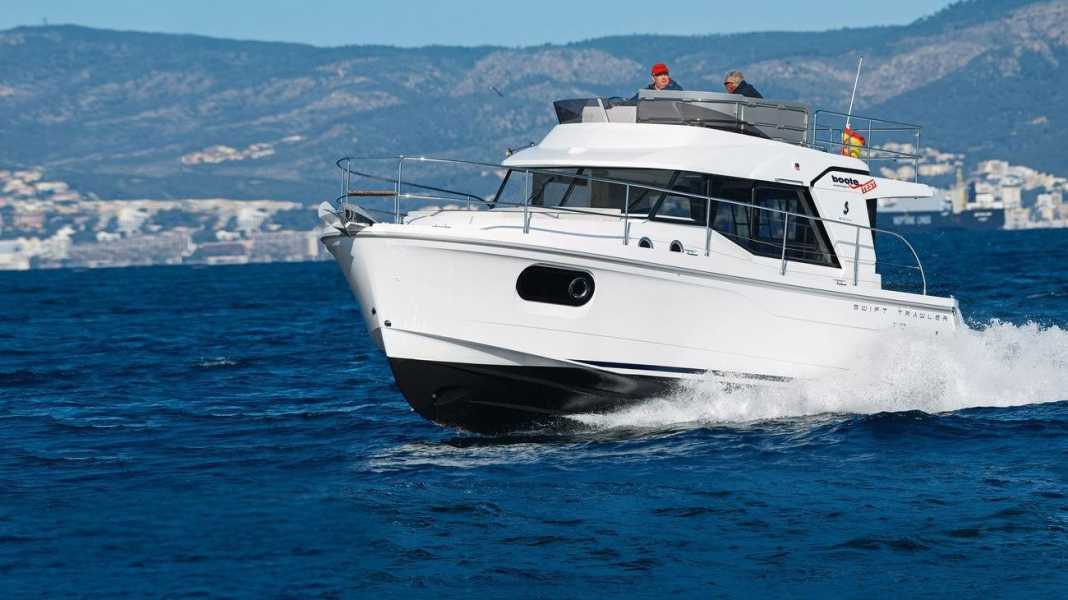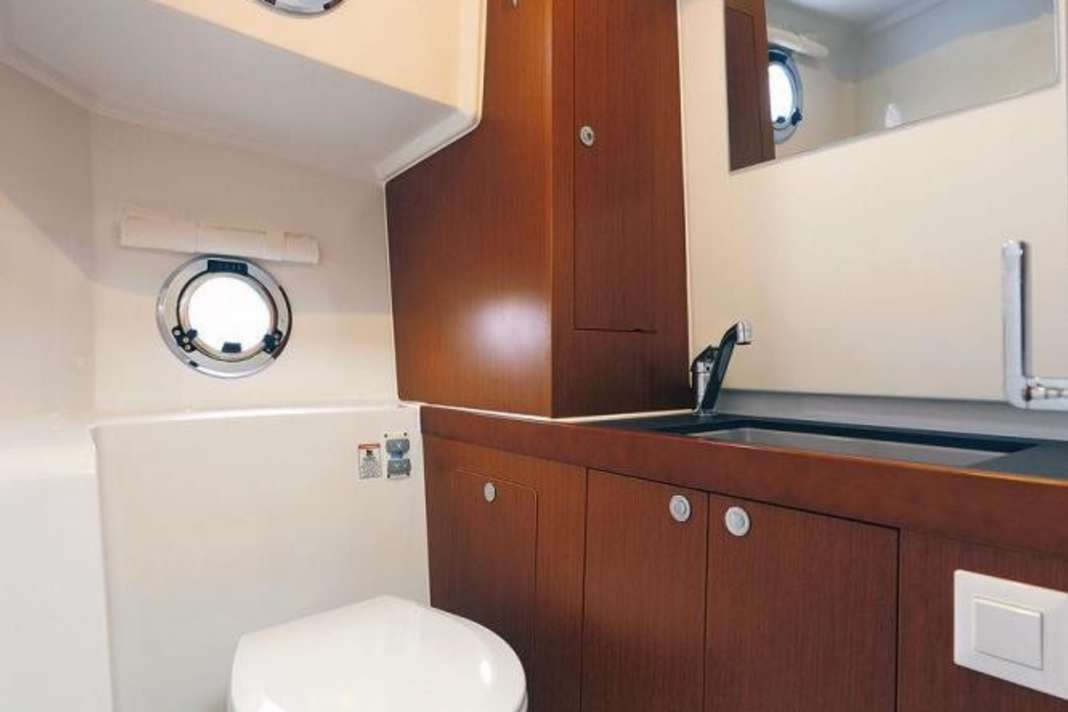
The Swift Trawler range already includes the 50, 44 and 34 models; now the 30 rounds off the lower end of the range. Strictly speaking, however, it is an almost 33-foot-long boat. We sail it on the Mediterranean off Palma de Mallorca. Our test boat is one of the first to be presented to the public, so of course there are still things that can be improved. Overall, however, both the workmanship - plastic, wood, upholstery and the entire technical and electrical installations - and the handling characteristics of our test boat give little cause for criticism.
Driving and manoeuvring
A motor with shaft drive requires a bow thruster when manoeuvring in the harbour or when reversing. Without it, manoeuvring is difficult when mooring or casting off. We also have a stern thruster; like the one at the bow, it costs extra but improves manoeuvrability enormously. Without the help of the thrusters, full circles at slow speed measure a maximum of 1 ½ boat lengths.






We sail slow passages at 7 knots (1400 rpm) so that the waves generated by the boat do not disturb us. And thanks to the hull construction plus keel, our test boat maintains the course once it has set off. From around 2400 rpm or just under 10 kn, it starts to glide. During the transition from displacement to planing, the boat rises almost parallel out of the water. Nevertheless, the bow rises so far that the foredeck forms a line with the horizon, unless you activate the electrically operated trim tabs, change the trim angle and thus improve the foresight.
After analysing our measurement data - we refer to the manufacturer's consumption values - our test boat cruises economically at 15 knots. and can theoretically travel 187 nm on one tank of petrol (plus 15% reserve). This range just about fulfils our requirements. At full throttle, the rev counter shows a good 100 rpm more than permitted, and the GPS logs 22.3 knots. The higher revs are due to the low load.
Technical data
- Shipyard: Bénéteau
- Type designation: Beneteau Swift Trawler 30
- CE category: B - Outside coastal waters
- Material of hull and deck: Plastic
- Length: 9,99 m
- Width: 3,53 m
- Displacement: 6,00 t
- Price: 215.866,00 €
